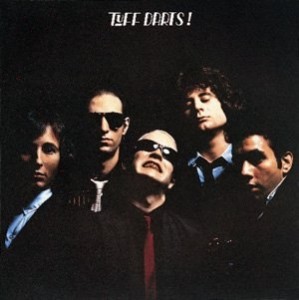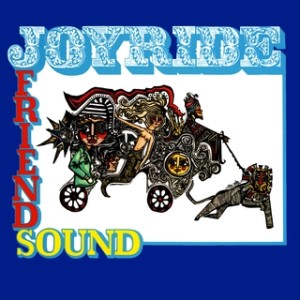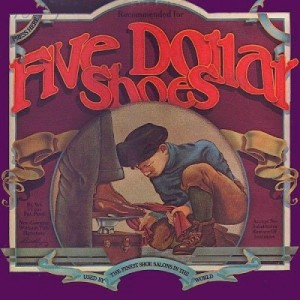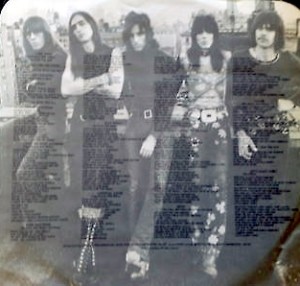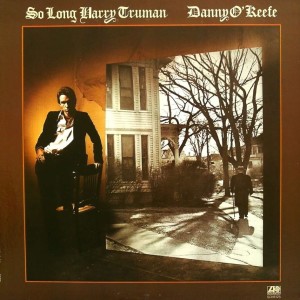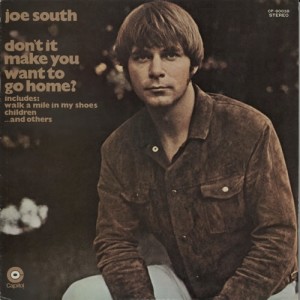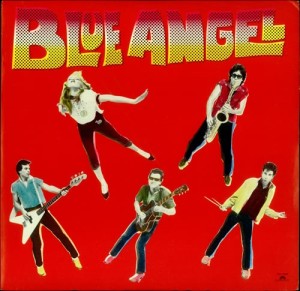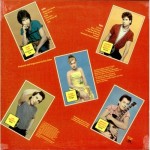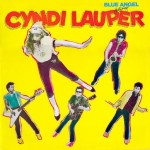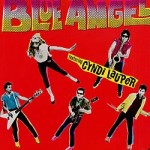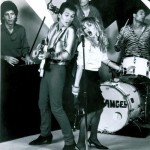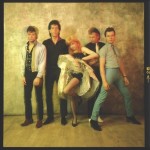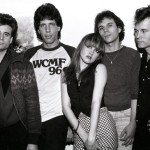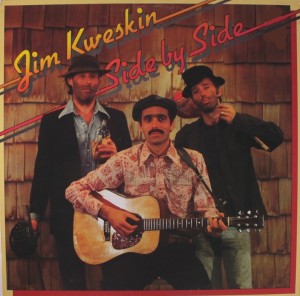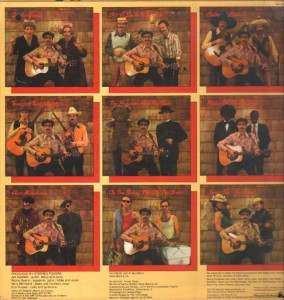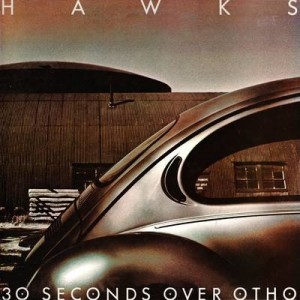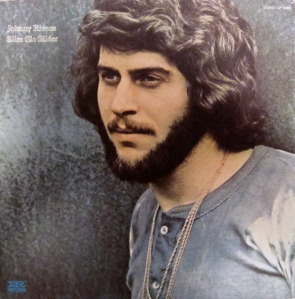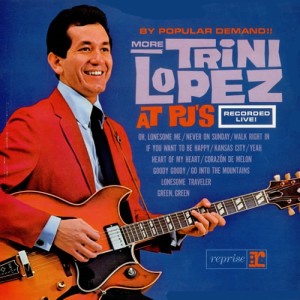This album has been kicking around for a while also.
I had little knowledge of the band beyond them being a New York first generation punk band.
A lot of first generation punk bands are, perhaps, or need to be, "retro" in style, or have retrospective influences. A lot of punk, after all, is about rallying against the current prevailing trends, against the mainstream. The way to do that best is to dig into the past, into sounds that are no longer fashionable, dusting them off, stripping them down and then presenting them afresh to contemporary audiences. With punk, that "stripping" means the rawer the better. How devoted and loyal you are to the sounds of yesterday will dictate where on the punk ladder you stand. The acts that get the kudos seem to be the ones who take those sounds to the next level (or perhaps compromised for Top 40 success) whilst the strict traditionalists have devoted cult followings but that's it. Tuff Darts fall into this latter group.
New York was (and is) a magnet to all inspiring musicians and bands. In the 70s the seeds of punk, I think, was being laid in places outside of the big cities where there was a paucity of entertainment but that music was being drawn to New York City where the labels, publishing, recording facilities and venues were.
Local "punks" though were a different breed. New York was not starved for entertainment but there were kids from the wrong side of the tracks or, perhaps, the wrong side of town, or from the wrong boroughs who felt marginalised and who didn't want to, or weren't allowed into the local disco. These kids also had exposure to all the music of yesteryear through record shops and local revival radio stations. Their punk revered the past … the music of The New York Dolls, Suicide, The Ramones and Mink DeVille is littered with retro-ish footnotes (and covers). At some stage it intermingled with those punks coming to NYC and a new tougher, harder sound was born.
This is just an observation.
Also, interestingly, in the first generation NYC punk scene you can usually tell which band is native NYC by the names. There are no surprises that The Ramones, most of Blondie, Television, Suicide, New York Dolls and The Dictators were all New Yorkers. Italian, Jewish, Polish, Continental European, and Eastern European names are more frequent in band line ups than in bands, say, of the West Coast. For sure, the ethnic mix of NYC is just that, but there does seem to be an overrepresentation of those kids here. Take Tuff Darts as an example:
- Tommy Frenzy – Vocals
- Jeff Salen – Lead Guitar
- Bobby Butani – Guitars
- John DeSalvo – Bass
- John Morelli – Drums
Allmusic: "While the Ramones, Patti Smith, Television, and the Dead Boys were the biggest names to emerge from the first wave of New York's punk rock explosion in the mid- to late '70s, dozens of other bands were also making the scene at CBGB's and Max's Kansas City at the time, and Tuff Darts were among the first to make their mark. Playing tough-minded rock with pop hooks, hard rock riffs, and more than a little retro style, Tuff Darts first began making a noise on the New York club scene in the early '70s, where their punchy sound and suit-and-tie image earned them gigs opening for the New York Dolls. The band's original lineup was Robert Gordon on vocals, Jeffrey Salen and Bob Butant on guitars, John DeSalvo on bass, and James Morrison on drums; this edition of the band made its recording debut with three tracks on the 1976 compilation album Live at CBGB's, though before long Gordon would move on to a well-respected solo career as a rockabilly revivalist…Gordon's departure was soon followed by drummer Morrison, who was replaced by percussionist John Morelli; Morelli in turn recruited a new singer for the group, Tommy Frenzy. With Frenzy at the helm, Tuff Darts scored a deal with Sire Records and released their self-titled debut album in 1978, which was produced by Bob Clearmountain and Tony Bongiovi and featured guest appearances from Ian Hunter and Eric Weissberg. A nationwide tour followed the album's release, but after returning to New York, Frenzy announced he was leaving Tuff Darts to form his own band, Big Spender, and it wasn't long before Tuff Darts broke up".
I have long liked Robert Gordon so I must admit I was happy to discover that Gordon had been in Tuff Darts though not at the time of this album. His musical sensibility is something I admire though he is like I have mentioned earlier a strict traditionalist operating within a new wave or punk framework.
It's nice to see this album spinning … it's on the Sire album like The Ramones and there are stylistic similarities though Tuff Darts here have been, perhaps, a little overproduced. Producers, Bob Clearmountain, Lance Quinn and Tony Bongiovi are experts at big rock and roll. And some people would consider Tuff Darts to be a big , loud rock and roll band and not a punk band.
They are wrong.
Sure, some of this record sounds like straight ahead rock n roll but that is because the rough edges have been smoothed out and the sound has been made more palatable for general audiences on purpose. I suspect the label wanted that. But it does not matter because you can still hear, under all that, the difference between them and any number of other "rock and roll" bands who did not come form a punk background. There is attitude here, musical smarts, a fine sense of musical history, a sense of humour and a lot of musical diversity all done through a, err punk framework.
Some of this music is brutal, it assaults the ears, the lyrics are uncompromising and the it the humour is decidedly dark. This is punk by nature not punk, colour by numbers.
Tracks (best in italics)
- Rats – (Butani, Salen) – some people are rats! Fair enough. A strange start to the album, tough sounding but quite straight and a little Mott the Hoople like. (who in their own wat were quite punkish)
- Who's Been Sleeping Here? – (Mikael Kirke, Salen) – a power pop with a bit more power than pop to it.
- Here Comes Trouble – (Frenzy) – a straight ahead rock n roller
- She's Dead – (Frenzy, Salen) – a theatrical piece. Punk goes Broadway". This could be something out of "Rocky Horror". The lyrics are not going to get them played on the radio though.
- Phone Booth Man – (DeSalvo, Salen) – a nice piece of humour about a person with some serious hang ups. Very funny and done to a nice retro beat with a slight Caribbean feel.
- (Your Love Is Like) Nuclear Waste – (DeSalvo, Salen) – A great song title if there ever was one of the best songs about a man purging himself of a woman's love ever:
I'd rather stick my tongue into a vat
drink ex-lax all day long
or have to chew on razor blades
or give head to king kong
Than have to be between the sheets with you for any time
or have to feel your scaly flesh moving onto mine
Your love is like a nuclear waste
your body is a danger to the human race
they should stamp contaminated right across your face
your love is like a nuclear waste
- My Guitar Lies Bleeding in My Arms – (DeSalvo, Morelli) – "while my guitar gently weeps", I don't think, so but quite funny. Intentionally so I hope. Great lyrics. Bon Jovi had a song with the same title – odd given their cousin co-produced this album.
- Love and Trouble – (Salen) – so so rock song.
- Head Over Heels – (Jeff Salen) – another straight rock song but with a bit of drive.
- Slash – (DeSalvo) – another piece that suggests the author had a bad girlfriend experience. This certainly won't endear him to any feminists. A great "spit" of a song.
- Fun City – (DeSalvo) – another spit against everything today. What can be more "punk" than that? This is a great.
- All for the Love of Rock 'n' Roll – (Butani, Salen) – A statement of faith…and a great way to finnish an album.
And …
This is sharp, funny and tough… and possibly a minor classic. I'm keeping it.
Chart Action
US
Singles
—
Album
1978 #156
England
—
Sounds
Rats
https://www.youtube.com/watch?v=5TlcVevQ98A
live
https://www.youtube.com/watch?v=AEBwtATYOt8
She's Dead
https://www.youtube.com/watch?v=ewpDVgWq6so
Phone Booth Man
https://www.youtube.com/watch?v=JcoUoY6hcQs
(Your Love Is Like) Nuclear Waste
https://www.youtube.com/watch?v=UlpW6lCVuSs
My Guitar Lies Bleeding in My Arms
https://www.youtube.com/watch?v=hlg-7TU1QZA
Slash
https://www.youtube.com/watch?v=v_jBufsPBt4
Fun City
https://www.youtube.com/watch?v=4xfU03OBZpE
All for the Love of Rock 'n' Roll
https://www.youtube.com/watch?v=Rx-Kxl5fb6g
Others
https://www.youtube.com/watch?v=gD3xOUlOqms
Review
http://www.trouserpress.com/entry.php?a=tuff_darts
http://www.allmusic.com/album/tuff-darts%21-mw0000221819
https://en.wikipedia.org/wiki/Tuff_Darts!
http://www.robertchristgau.com/get_artist.php?name=Tuff+Darts
Bio
http://www.allmusic.com/artist/tuff-darts-mn0000805000/biography
https://en.wikipedia.org/wiki/Tuff_Darts
http://www.punkmagazine.com/stuff/stuff-jeff_salen_obit.html
Website
—
Trivia
- On the inner they thank Martin Scorsese, Hilly Krystal and Don Corleone
- They "God Bless" Ian Hunter on the back sleeve who played on the album.
Eric Weissberg played pedal steel on some tracks and another CBGB band, The Shirts, provide backing vocals.

